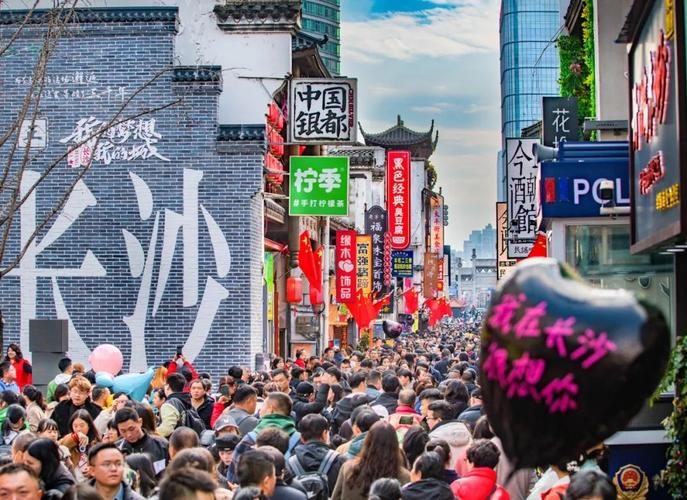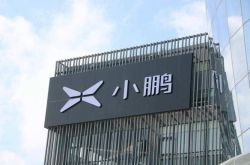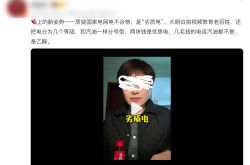Who Will Claim the First Straight Flush in the OTA "Guandan" Card Game?
![]() 08/22 2025
08/22 2025
![]() 427
427
By Tanglang Observer
Domestic residents embarked on 3.285 billion trips, spending 3.15 trillion yuan on tourism. Among these, urban residents made 2.452 billion trips, up 17.5% year-on-year, while rural residents undertook 833 million trips, a 30.6% increase from the previous year. Data released by the Ministry of Culture and Tourism for domestic residents' travel in the first half of 2025 underscores that China's mass tourism era has fully arrived.
Travel is no longer exclusive to the elite but has become a daily consumption item for the masses, continuously unlocking consumption potential. Since the promotion of first-time flyer services by civil aviation in 2022, over 60 million passengers nationwide had availed of these services by the end of 2024, equivalent to 12% of China's total civil aviation passengers. Air travel is accelerating its reach into county-level inclusive services. In the accommodation sector, "full occupancy waves" were frequent during peak periods such as this summer vacation and May Day. Huazhu Group's hotels welcomed over 23 million guests, marking a 24% year-on-year increase.
Behind this transformation lies the indication that the tourism industry has entered a new stage of more refined development. Currently, in the OTA industry, the card table is expanding, but seats are tightening, leading to an intensified "Guandan" card game among leading brands. Each player strives to hold their key cards and clarify their "playing" strategies to ensure they remain at the table and emerge victorious.
Leading brands at the table each employ their own differentiated strategies:
In the profound transformation of the mass tourism era, the differentiation trend in the OTA industry has become increasingly pronounced. Based on differences in resource endowments and strategic focuses, leading brands have gradually evolved into three types of core players, each relying on unique advantages to form competitive barriers.
1. High-End Competitors: Building barriers with "globalization + high-end" to lock in high-net-worth customers.
Amidst fierce competition in the mass market, coupled with consumption upgrades and a broader global perspective, a group of elites with both spending power and high quality and experience pursuits has emerged. They may be middle and senior management or high-net-worth entrepreneurs seeking efficiency and high-quality services during business trips, or high-end leisure travelers who love exploring the world and value travel experiences, willing to pay for unique itineraries and thoughtful services.

This elite group has become a key focus for Ctrip's layout in high-end competition. Leveraging its international footprint and high-end service capabilities, Ctrip focuses on the cross-border tourism and high-end business travel markets. Official data reveals that Ctrip's international business revenue share has risen to 14%, with inbound travel orders increasing by approximately 100% year-on-year, and hotel bookings in major visa-free areas of the Asia-Pacific region surging by over 240%. Based on global tourism resource integration services, Ctrip's international business continues to improve, becoming a core engine for revenue growth.
Furthermore, Ctrip has constructed a comprehensive high-end service system through value-added services such as "buy new and return old," "related itinerary reminders," and "private travel butlers," precisely catering to the high-end tourism market's demand characterized by "high frequency, high spending per customer, and globalization," continuously solidifying the loyalty of high-net-worth customers.
2. Mass Market Cultivators: Taking root with "cost-effectiveness + technological strength" to fully activate the mass market.
In reality, the key players in the mass tourism market comprise a vast number of individuals from non-first-tier cities. What truly supports the vast Chinese consumer market are not a few merchants and high-end consumers but the products and services needed by millions of ordinary people, along with their aspirations for a better life. Their travel frequency and tourism spending are accelerating. According to the Ministry of Culture and Tourism, in the first half of 2025, rural residents made 833 million trips, up 30.6% year-on-year, and spent 0.55 trillion yuan on travel, a 30.1% increase from the previous year. With the awakening of consumption power in the mass market and the continuous improvement of tourism infrastructure, the travel needs of this group will further be released in the future, presenting an extremely imaginative market space.

Focusing on mass consumer demand, Tongcheng Travel has become a core choice for the mass market and young customers through abundant product and service offerings, AI technology to reduce costs and increase efficiency, and industrial chain integration to optimize prices. As of the end of the second quarter of 2025, Tongcheng Travel served 1.99 billion people annually, with its annual paid users reaching a new high of 252 million. In terms of registered users, over 87% come from non-first-tier cities, forming the foundation for the brand to activate mass tourism consumption power.
By deeply integrating platform advantages and Internet technology into the entire service chain and actively integrating the upstream and downstream of the tourism industry chain, Tongcheng Travel not only enhances user experience but also reduces operating costs, ultimately benefiting the mass customer base by precisely matching their cost-effective consumption expectations, continuously activating the potential of mass tourism consumption. The results are gratifying, with Tongcheng Travel achieving revenue of 9.05 billion yuan in the first half of 2025.
3. Ecosystem Disruptors: Breaking through with "cross-border integration" to reconstruct user decision-making links.
Emerging brands such as Flying Pigs and Douyin are breaking away from the traditional OTA positioning as a booking tool and have embarked on a new track model of scenario-based + traffic-based, relying on ecological resources or content capabilities. This model redefines how OTAs connect with users and the industry. Specifically, Flying Pigs leverages Alibaba's e-commerce, payment, local life, and other ecological capabilities to deeply intertwine tourism with consumption, public welfare, county economies, and other scenarios, thereby expanding users' travel experiences and enabling users to make charitable donations and purchase local specialties directly on the platform.
Meanwhile, Douyin's approach is more intuitive, with its short videos and live streams naturally possessing the ability to restore scenes. When users encounter relevant content, the platform accurately binds tourism products (tickets, accommodation) with content scenarios through algorithms, quickly closing the decision-making loop from content inspiration to consumption ordering. This new model aims to deeply activate demand through scenarios and content when users have no specific needs, guiding consumption and opening up broader growth space for the industry.
Few Cards Remain on the Table
As Ctrip anchors high-end customers with its global layout, Tongcheng Travel cultivates the mass market, and Flying Pigs and Douyin open up new tracks with their ecological capabilities, the head-to-head differentiated barriers in the OTA industry have initially taken shape. Simultaneously, under the combined effects of peaking consumption growth, homogeneous excess supply, and user rationalization, the trend of stock competition in the mass tourism era is also prominent.
This trend adds "strangulation" to the "divergence" of players - industry competition has shifted to a more intense battle for core resources, and three "key cards" that determine the direction of the card game have emerged: users, industry chains, and AI, reshaping the final logic of the industry. The strategic ambitions of leading platforms have long been locked on these three fronts.
The First Card: Users.
Deeply tapping into user value is an inevitable choice for OTA platforms to break through the growth ceiling. Nowadays, the domestic tourism market penetration rate has reached 68%, and the slowdown in user scale growth forces players to break out externally. Therefore, OTA platforms are focusing on enhancing user value, finding incremental growth from users themselves, and then completing the leap from scale growth to high-quality growth.
Ctrip focuses on betting on overseas market users, with sales expenses surging 30% year-on-year to 3 billion yuan in the first quarter of 2025, forcefully laying the groundwork for the overseas market despite the risk of short-term profit margin pressure. Tongcheng Travel takes root in the domestic mass market and serves more ordinary people, bringing about value enhancement: as of the end of the second quarter of 2025, Tongcheng Travel's annual paid users reached a new high of 252 million. Additionally, Tongcheng Travel launched the international travel booking platform HopeGoo in 2024, supporting global payments in 16 currencies and multi-language operations, actively entering the international market. As of May 2025, HopeGoo had successfully topped the free download rankings of travel apps in the Hong Kong region on the App Store and ranked among the top five in the comprehensive download rankings across all categories, opening a new situation in the regional market.

The Second Card: Industry Chain.
Deeply tapping into industry chain resources is an effective path for OTA platforms to transition from intermediaries to value creators. Currently, the proportion of airline direct sales has risen to 45%, and the proportion of hotel direct booking has exceeded 30%, continuously narrowing the profit margins of the traditional agency model.
For OTA platforms, the ability to integrate industry chains determines whether the platform can grasp pricing power and service initiative. In this regard, Tongcheng Travel focuses on the smart construction of destinations and leverages its technological advantages to help destinations build a smart tourism ecosystem, comprehensively revitalizing the tourism economy upstream and downstream of the industry chain. eLong Hotel Technology has also ranked among the top 8 in the industry, operating over 2,700 hotels and empowering small and medium-sized hotels through supply chain integration, increasing hotel traffic while also reducing user consumption costs through cost optimization.
The Third Card: AI.
Deep expertise in AI applications is the ultimate weapon for OTA platforms to carry out an efficiency revolution. According to Tongcheng user research, users' tolerance threshold for service response speed has been compressed from 2 hours to 15 minutes, making it unsustainable for a single manual service model. Major platforms are actively deploying AI and introducing new technologies to carry out an efficiency revolution.
For example, Ctrip has launched the "Ctrip Asks" large model and AI travel assistant "TripGenie." The AI agent Deeptrip launched by Tongcheng Travel not only assists users with travel decision-making references but also supports the closed loop from itinerary planning to booking services. Additionally, Zhiyi Technology, a subsidiary of eLong Hotel Technology, announced that Lvzhi Cloud has fully integrated with AI large models such as DeepSeek and Alibaba Tongyi Qianwen, driving the digital and intelligent transformation of hotels and becoming a benchmark case in the hotel management system field that deeply integrates general artificial intelligence technology for the first time. It is worth mentioning that in the first half of this year, the number of users making reservations through Tongcheng Travel's AI has achieved rapid growth. In the era of mass tourism, as the public becomes accustomed to using AI, the future of OTA platforms will be even more imaginative.
Who Can Get a Straight Flush Under the Reconstructed Rules?
The essence of the mass tourism era is a collection of diverse needs. Some people pursue high-end customization, some need economy and convenience, and some value cultural experiences. Behind this core essence, the OTA industry is no longer facing a price war but a service war. Whoever can more accurately and better serve different customers and solve their most urgent needs will be able to gain a firm foothold in the market and win the future.
This transformation requires enterprises to abandon reliance on a single strategy, just like the "Guandan" game, and find their own "straight flush." In terms of "playing" strategies, it is more necessary to integrate their own "trump cards," or core advantages, capture key market resources, build a differentiated service system, and break through with brand synergy value. Ctrip's deep cultivation of the high-end service ecosystem and Tongcheng Travel's anchoring of mass cost-effectiveness with AI + industry chain integration are both practices of this logic: clarifying one's own cards and sorting out the path of playing cards to gain the initiative in the reconstruction of rules.
Essentially, the future competition in the OTA industry is the ultimate refinement of the demand-service-value chain. Whoever can penetrate the fog of diverse needs, adapt to the market with a systematic service strategy, and condense scattered advantages into a "straight flush" that synergizes to win will be able to secure chips for continuous growth on the service war card table and define a new value benchmark for the industry.
*All images in this article are sourced from the internet





